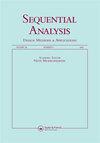A new formulation of minimum risk fixed-width confidence interval (MRFWCI) estimation problems for a normal mean with illustrations and simulations: Applications to air quality data
IF 0.6
4区 数学
Q4 STATISTICS & PROBABILITY
Sequential Analysis-Design Methods and Applications
Pub Date : 2022-04-03
DOI:10.1080/07474946.2022.2070214
引用次数: 0
Abstract
Abstract Research on classical fixed-width confidence interval (FWCI) estimation problems for a normal mean when the variance remains unknown have steadily moved along under a zero-one loss function. On the other hand, minimum risk point estimation (MRPE) problems have grown largely under a squared error loss function plus sampling cost. However, the FWCI problems customarily do not take into account any sampling cost in their formulations. This fundamental difference between the two treatments has led the literature on the FWCI and MRPE problems to grow in multiple directions in their own separate ways from one another. In this article, we introduce a new formulation combining both MRPE and FWCI methodologies with desired asymptotic first-order (Theorems 2.1–2.2) and asymptotic second-order characteristics (Theorem 2.3) under a single unified structure, allowing us to develop a genuine minimum risk fixed-width confidence interval (MRFWCI) estimation strategy. Fruitful ideas are proposed by incorporating illustrations from purely sequential and other multistage MRFWCI problems with an explicit presence of a cost function incurred due to sampling. We supplement the general theory and methodology by means of illustrations and analyses from simulated data along with applications to air quality data.正态均值最小风险固定宽度置信区间(MRFWCI)估计问题的一个新公式及其示例和模拟:在空气质量数据中的应用
摘要方差未知时正态均值的经典固定宽度置信区间(FWCI)估计问题的研究在零一损失函数下稳步发展。另一方面,在平方误差损失函数加上采样成本的情况下,最小风险点估计(MRPE)问题在很大程度上增加了。然而,FWCI问题通常在其配方中不考虑任何采样成本。这两种治疗方法之间的根本差异导致FWCI和MRPE问题的文献以各自独立的方式向多个方向发展。在本文中,我们引入了一种新的公式,将MRPE和FWCI方法与期望的渐近一阶(定理2.1–2.2)和渐近二阶特性(定理2.3)结合在一个统一结构下,使我们能够开发出真正的最小风险固定宽度置信区间(MRFWCI)估计策略。通过结合纯序列和其他多级MRFWCI问题的说明,提出了富有成效的想法,其中明确存在由于采样而产生的成本函数。我们通过对模拟数据的说明和分析以及对空气质量数据的应用来补充一般理论和方法。
本文章由计算机程序翻译,如有差异,请以英文原文为准。
求助全文
约1分钟内获得全文
求助全文
来源期刊

Sequential Analysis-Design Methods and Applications
STATISTICS & PROBABILITY-
CiteScore
1.40
自引率
12.50%
发文量
20
期刊介绍:
The purpose of Sequential Analysis is to contribute to theoretical and applied aspects of sequential methodologies in all areas of statistical science. Published papers highlight the development of new and important sequential approaches.
Interdisciplinary articles that emphasize the methodology of practical value to applied researchers and statistical consultants are highly encouraged. Papers that cover contemporary areas of applications including animal abundance, bioequivalence, communication science, computer simulations, data mining, directional data, disease mapping, environmental sampling, genome, imaging, microarrays, networking, parallel processing, pest management, sonar detection, spatial statistics, tracking, and engineering are deemed especially important. Of particular value are expository review articles that critically synthesize broad-based statistical issues. Papers on case-studies are also considered. All papers are refereed.
 求助内容:
求助内容: 应助结果提醒方式:
应助结果提醒方式:


